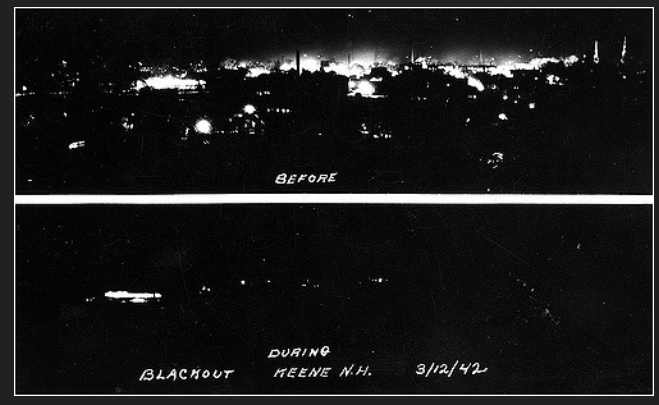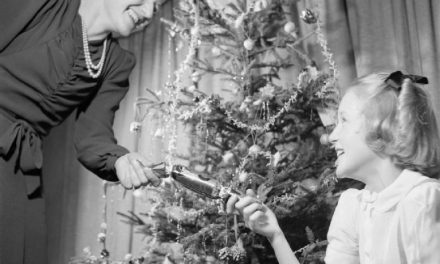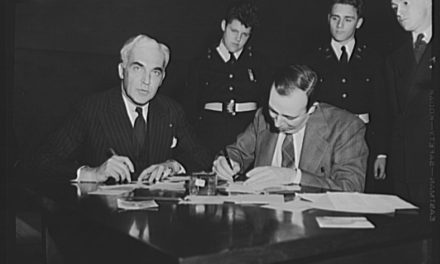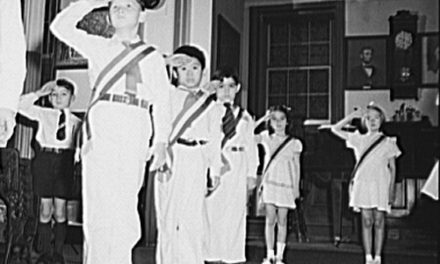From streetlights to headlights, major cities on the East Coast went completely dark this past week, as surprise blackout drills hit the U.S. for the first time. For the last few months, 30 million Americans living in coastal areas have been experiencing dim-out drills in preparation for air raids, but this was the first time for complete blackouts in many cities.
On different nights last week New York City, Philadelphia, and Washington, D.C. all experienced near-total darkness come 10 o’clock at night. People were going about their nights when alarms started to sound in every area. There were many unforeseen consequences.
A few minutes before the New York City blackout went into effect, a man identified as Joseph Wering, 70, fell from a subway platform in Brooklyn and died. Doctors and the police emergency squad were working to extricate his body when everything went black.
The Washington and Philadelphia baseball teams were in the middle of a tight game when all of Griffith Stadium shut down.
Residents of Coney Island were confused when the bright boardwalk lights were not shining.
Citizens are notified of the drill by way of sirens stationed across the states and cities. New York City alone has 409 sirens. The sirens sound for about 30 minutes and then the lights are allowed to come back on. According to officials, this is in preparation for air strikes by enemy forces. The public has no advance warning that the blackouts are coming, in an effort to simulate a real experience.
Officials in all states said the first-time drills were successful.
Mayor Fiorello La Guardia of New York City and Major General William N. Haskell, New York State director of civilian defense, called the test “an excellent performance.”
However, the drills resulted in some fatalities and injuries. 70-year-old Louise Biancardi rushed into the hallway of her house when the sirens began and died of a heart attack brought on by the excitement.

Photograph showing “before and after” views of Keene, New Hampshire, during the blackout of March 12, 1942. From Keene Public Library.
Perhaps the most dangerous event from the night of the blackout happened on the road. Julian Jowaiszas, a motorcycle policeman in Queens, was stopping automobiles that failed to halt in obedience to blackout regulations. As he was performing his duties, one car failed to stop. This immediately forced him to jump his vehicle across a concrete divider, which threw him to the ground. He is currently in the hospital suffering from broken ribs, a fractured shoulder blade and possibly internal injuries.
Mayor La Guardia did not mention the crash, or the seven other accidents from the night of the blackout, during his most recent press conference. “The blackout was a great success and vehicular traffic behaved beautifully,” said the mayor.
Other officials have noticed the problem and are putting forth solutions to end vehicular accidents during blackouts. After accidents like Jowaiszas’s, Commissioner of Police Guy Manson said it is part of blackout regulations that all vehicles other than trucks and buses must stop during the blackouts and pull over to the curb. Those who do not will be prosecuted and fined.
In preparation for even more frequent surprise blackouts, the US Army Engineers have designed special lamps for cars to alleviate this issue. These lamps, in high volume production by General Electric, must yield less than one-sixth the light cast by a full moon on a clear night. The War Department says it is well below the threshold of visibility from the air and still allows traffic to move at 12 mph.
Moving forward, the department advises those working or moving in a blackout to sit still for the first five minutes. This will allow time for their pupils to expand and become 100 times more sensitive to light. Once the eyes have adjusted, the new lamps will be an effective aid. The marker lamps must be mounted beside the unused headlights during a blackout.
This is all new for America, but in London blackouts have been happening nightly for months. Raymond Damiel, a London correspondent, wrote an advice column to help Americans navigate the blackouts and the various regulations.
“Carry a flashlight, but cover it in at least two layers of tissue paper, preferably blue and opaque enough to prevent an air raid warden’s seeing it at a distance of fifty or sixty yards, but not so opaque that one cannot see where the next step is leading,” Damiel advises.
“Find refuge in subways—they are always well lit because they are underground. Or sit back in a taxi cab and let the driver do the worrying.”
Sources:
By, R. D. (1942, Aug 16). Blackout hints — from a blackout veteran. New York Times (1923-Current File) Retrieved from https://search.proquest.com/docview/106324341?accountid=13793
SURPRISE BLACKOUT, AIR RAID DRILL HELD FOR FIRST TIME HERE. (1942, Aug 01). New York Times (1923-Current File) Retrieved from https://search.proquest.com/docview/106252448?accountid=13793
All-night blackouts halted to aid interstate bus traffic. (1942, Aug 15). The Washington Post (1923-1954) Retrieved from https://search.proquest.com/docview/151578649?accountid=13793
Cooperation in raid test improves. (1942, Aug 19). The Washington Post (1923-1954) Retrieved from https://search.proquest.com/docview/151496710?accountid=13793
Commissioners adopt district blackout code. (1942, Aug 14). The Washington Post (1923-1954) Retrieved from https://search.proquest.com/docview/151579571?accountid=13793
SURPRISE BLACKOUT HELD IN 2 STATES. (1942, Aug 19). New York Times (1923-Current File) Retrieved from https://search.proquest.com/docview/106462807?accountid=13793
Officials call raid test A failure. (1942, Aug 12). The Washington Post (1923-1954) Retrieved from https://search.proquest.com/docview/151472038?accountid=13793
CRASH IN BLACKOUT BRINGS SUSPENSION. (1942, Aug 02). New York Times (1923-Current File) Retrieved from https://search.proquest.com/docview/106248815?accountid=13793





